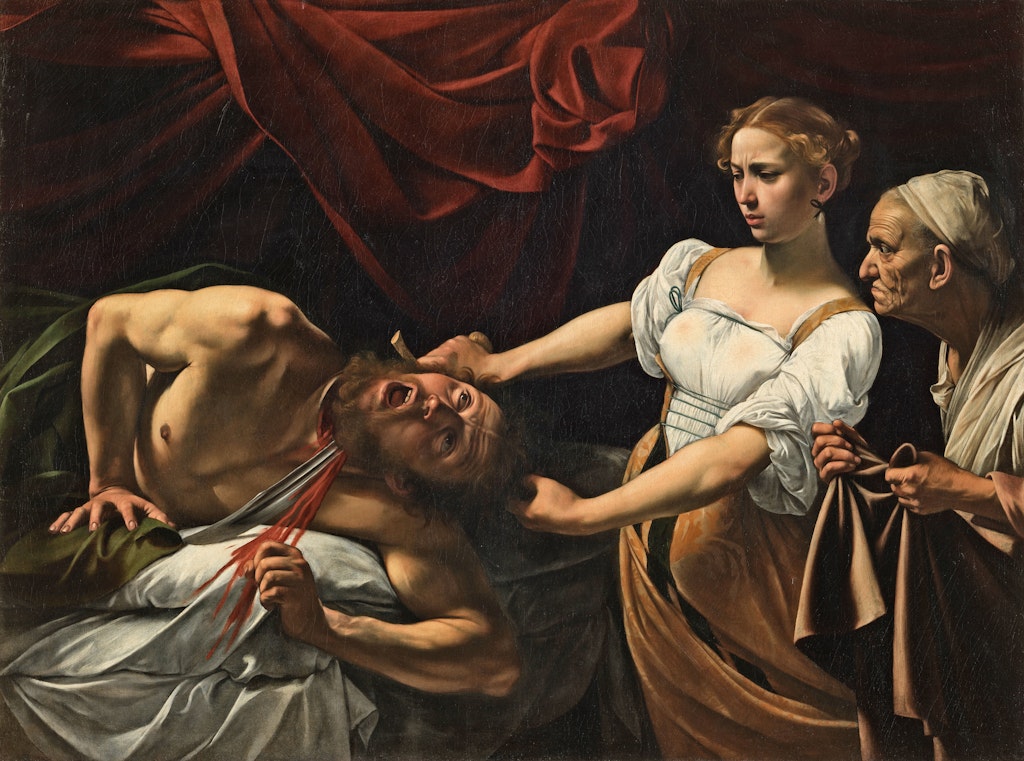Getting creative with history
The promise of John-Paul Stonard’s Creation is poisoned by a revisionist agenda
From the first charcoal drawings on cave walls, to Rachel Whiteread’s Turner Prize-winning cast of a house interior, Creation attempts to chart the nature of artistic creativity worldwide. It is a comparative anthropological study of what creativity means within a differing but constant construct: society. The book offers a chronological survey of fine art, applied art and architecture, in that order of emphasis. We visit the highlights of major civilisations, respectively the Sumerians, Assyrians, Egyptians, Chinese, Japanese, Olmec, Mayans, Aztecs, Greek, Romans, Indians and others. Then we return to Europe for the majority of the remainder of the book.

Kenneth Clark’s Civilisation — tracing the course of European culture from ancient Greece to the 20th century — was considered an encyclopaedic achievement. This is by some measure even more ambitious. Curator and cultural historian John-Paul Stonard takes us to ancient China, the lost civilisations of Central America and modern and prehistoric Africa, whilst also featuring art of Western societies from the medieval to modern era. Surely, Stonard is setting himself up for failure.
There are some arresting points. The presence of the Buddha was indicated by absence. This was the avyaktamurti (imageless image, akin to the koan “gateless gate”), shown by a flaming pillar, empty throne below a Bodhi tree, a footprint or empty space. Pieter Bruegel the Elder’s densely populated paintings are from the genre Wimmelbild — “busy paintings”.
There are some unexpected pleasures in the picture choices, especially of art of the Far East and Central America. The small size of illustrations (especially for detailed or unfamiliar images) will disappoint many. Naturally, there is a preference for grand paintings, statues and public art over the minor and graphic arts. There are some vintage photographs of statues and buildings, which have aesthetic appeal in themselves.
Why choose a weak painting by a lesser-known painter?
The account really takes off in the Renaissance, mainly because Stonard then has enough space, written sources and art works to tell a joined-up story. There is nothing new here but the Western fine-art canon is fairly established. With a few exceptions, the range is suitable. There is a major blindspot. Stonard thoroughly short changes the Victorian salon painters, Naturalists, Pre-Raphaelites, Symbolists and Art Nouveau. This snubbing of realists means Stonard has to skip Edward Hopper, as well as the whole parallel story of traditionalist art during the 20th century.
The pace is so rapid that we race through history in a somewhat hectic manner. The emphasis is on Western art of the last two centuries. Twelve to twenty pages apiece to cover each society’s artistic output is skimpy, but (given the scope) it could hardly be otherwise. All this may leave readers pleased but puzzled. What did they just read? Is Creation more than a series of thumbnail sketches of a handful of characteristics and outstanding art works from the great world cultures?
For the popular cultural historian, there is a temptation to read everything through the lens of today, searching out a quasi-liberal egalitarianism, cosmopolitanism and tolerance in societies with different values. I had my suspicions about a critical fault line but it was not until Abstract Expressionism was represented by a single painting — not by Pollock, Rothko or De Kooning but by Lee Krasner — that my concerns were proven correct. Why choose a weak painting by a lesser-known painter? The same reason Frida Kahlo and Georgia O’Keeffe are illustrated and Picasso is not — because they are women. Both of the latter two women artists are worthy of inclusion, but not at the expense of Picasso.
Women are absurdly over represented
Stonard’s politics force him to misrepresent art history. Not one in a hundred art lovers would choose Krasner as a standard-bearer of the New York School; Picasso is the most famous painter of the 20th century. No sculptor would credit Properzia de’ Rossi (illustrated) as more important than Ghiberti (not illustrated). Women are absurdly over represented. Two portraits of Sofonisba Anguissola included but Sebastiano del Piombo omitted? Judith Leyster illustrated but not Claude Lorrain? Stonard does discuss famous male artists in the text but the illustration choice is so biased it betrays his hand. In the text Stonard is rather timid concerning the abilities of women artists. Creation is an awkward mix — clearly revisionist but not fully feminist.
A big narrative — the glorious rise of humanism, the debasement of humanity surrendering to materialism, the dangers and advantages of globalism for humanity — is not always necessary, but in a book such as this, such a framework gives the reader a constant reference point. Is this an attempt at a “world canon”? The problem with a world canon is that every society develops its art to suit its discrete values and narratives, forming traditions. Although there is a degree of cross-national artistic transmission (Impressionists imitating Japanese woodblock prints, for example), this is never as common or deep as globalists insist. Canons exist because they present a comprehensible selection of art that can plausibly be connected in a single continuous narrative, which is used as a mnemonic narrative. Stonard does not outright propose a world canon but Creation does leave open that interpretation.
Creation has moments of delight and insight but its promise is poisoned by a revisionist agenda. Histories written to curry contemporary approval are extinguished by posterity.
Enjoying The Critic online? It's even better in print
Try five issues of Britain’s most civilised magazine for £10
Subscribe














